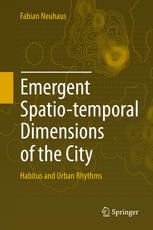

Most ebook files are in PDF format, so you can easily read them using various software such as Foxit Reader or directly on the Google Chrome browser.
Some ebook files are released by publishers in other formats such as .awz, .mobi, .epub, .fb2, etc. You may need to install specific software to read these formats on mobile/PC, such as Calibre.
Please read the tutorial at this link: https://ebookbell.com/faq
We offer FREE conversion to the popular formats you request; however, this may take some time. Therefore, right after payment, please email us, and we will try to provide the service as quickly as possible.
For some exceptional file formats or broken links (if any), please refrain from opening any disputes. Instead, email us first, and we will try to assist within a maximum of 6 hours.
EbookBell Team

4.8
34 reviewsThis book focuses on the creation of space as an activity. The argument draws not only on aspects of movement in time, but also on a cultural and specifically social context influencing the creation of the spatial habitus. The book reconsiders existing theories of time and space in the field of urban planning and develops an updated account of spatial activity, experience and space-making. Recent developments in spatial practice, specifically related to new technologies, make this an important and timely task. Integrating spatial-temporal dynamics into the way we think about cities aids the implementation of sustainable forms of urban planning. The study is composed of two different case studies. One case is based on fieldwork tracking individual movement using GPS, the other case utilises data mined from Twitter. One of the key elements in the conclusion to this book is the definition of temporality as a status rather than a transition. It is argued that through repetitive practices as habitus, time has presence and agency in our everyday lives. This book is based on the work undertaken for a PhD at the Centre for Advanced Spatial Analysis and was and accepted as thesis by University College London in 2013.